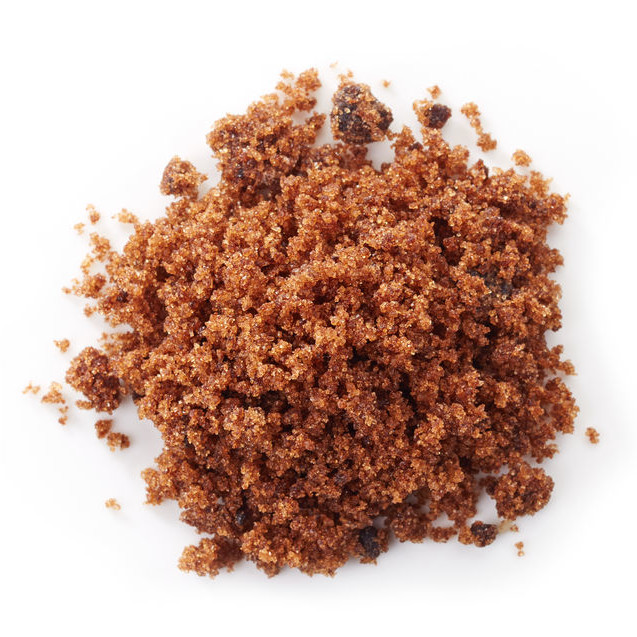
Brown Sugar
What is Brown Sugar?
Brown sugar is granulated cane sugar with added molasses. It is coarser and more moist than white sugar and imparts a unique flavor and dark color to food systems.
Two main forms of brown sugar are available:
- Unrefined
- Partially refined
Origin
Brown sugar originated in the Caribbean during the 1700s. Afterwards, it came into popular use in England and the American colonies due to its low price and unique flavor and color, compared to white sugar.1
Commercial production
Starting with sugarcane, typical production steps include:
- Cleaning, chopping, milling, and pressing, and clarification of cane juice (12-14% sucrose)
- Boiling and evaporation to make thickened juice and syrup
- Crystallization and centrifugation to separate raw sugar crystal
- Addition of molasses to form the final product
Depending on the extent of boiling, three classes of this sugar can be produced: light (1st boil), dark (2nd boil), and blackstrap (3rd boil).2
Nutrition
Compared with white sugar, this sugar has slightly higher calcium, iron, and potassium content and slightly less calories.3
Function
- Caramelization: When brown sugar is used in place of granulated white sugar, small amounts of baking soda are needed to help neutralize the acidity that comes from the molasses. Also, it helps improve caramelization and crust browning.
- Sweetening: used effectively in baked goods, sauces, marinades, sugar syrup, etc.4
- Moisture retention: another desirable attribute of brown sugar in baked goods.
Application
- Light brown sugar: contains about 3.5% molasses. It is ideal for making cookies, butterscotch and other products where full molasses flavor and dark color are less critical.
- Dark brown sugar: contains about 6.5% molasses. It’s ideal for more full-flavored products such as gingerbread.
This sugar is finer, softer, and moister than granulated sugar. When brown sugar is used in place of granulated white sugar, a small amount of baking soda is needed to help neutralize the acidity that comes from the molasses. Acids can interfere in the process of carmelization of sugar, so neutralization of those acids will improve crust color.
FDA Regulation
Cane sugar is regulated by FDA in the article 21CFR184.1854.5
References
- History of brown sugar. https://www.ehow.com/about_5375423_history-brown-sugar.html. Accessed Nov 21. 2019.
- Roger, A. Clemens., Julie, M. Jones., Mark, Kern., Soo-Yeun, Lee., Emilym J. Mayhew., Joanne, L. Slavin., and Svetlana, Zivanovic. Functionality of Sugars in Foods and Health. Comprehensive reviews in Food Science and Food Safety. 15 (2016): 433-470.
- What is brown sugar? https://www.thespruceeats.com/what-is-brown-sugar-1328677. Accessed Nov 18. 2019.
- Brown Sugar vs. White Sugar: What’s the Difference? https://www.healthline.com/nutrition/brown-sugar-vs-white-sugar. Accessed Nov 18. 2019.
- CFR – Code of Federal Regulations 21CFR184.1854. Accessdata.fda.gov. April 01. 2019. https://www.accessdata.fda.gov/scripts/cdrh/cfdocs/cfcfr/CFRSearch.cfm?fr=184.1854. Accessed Nov 18. 2019.

